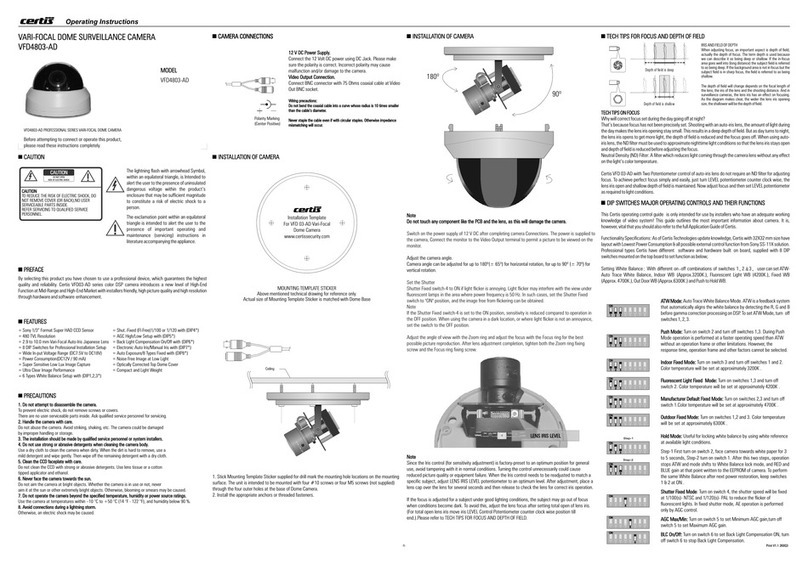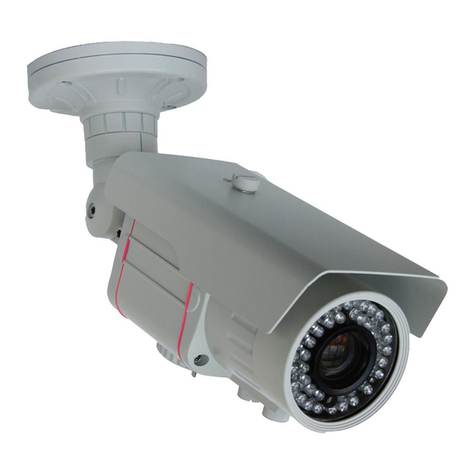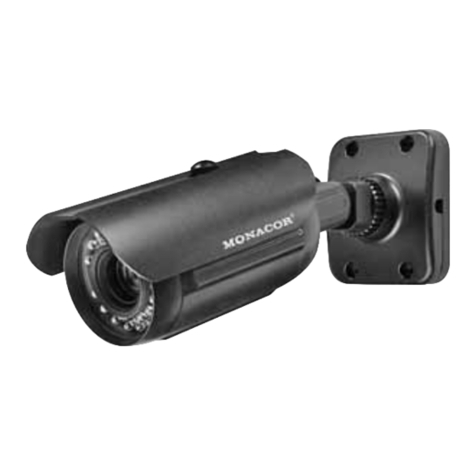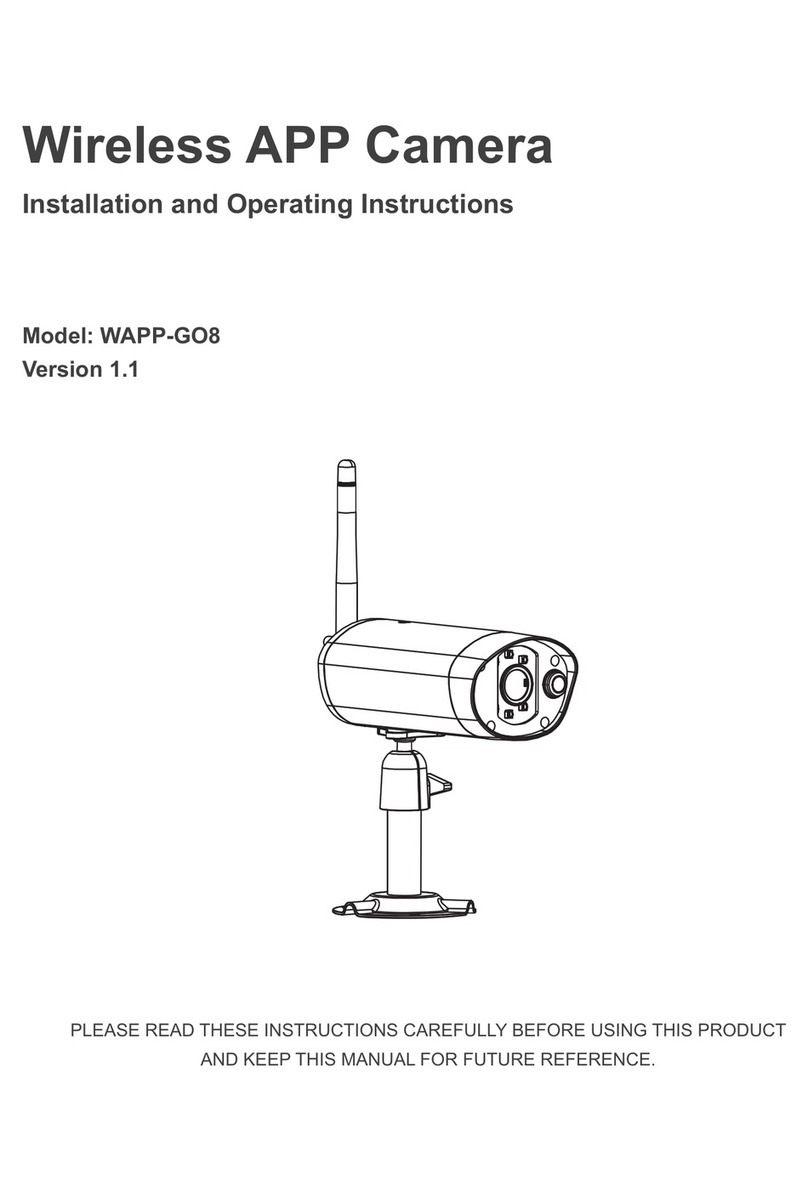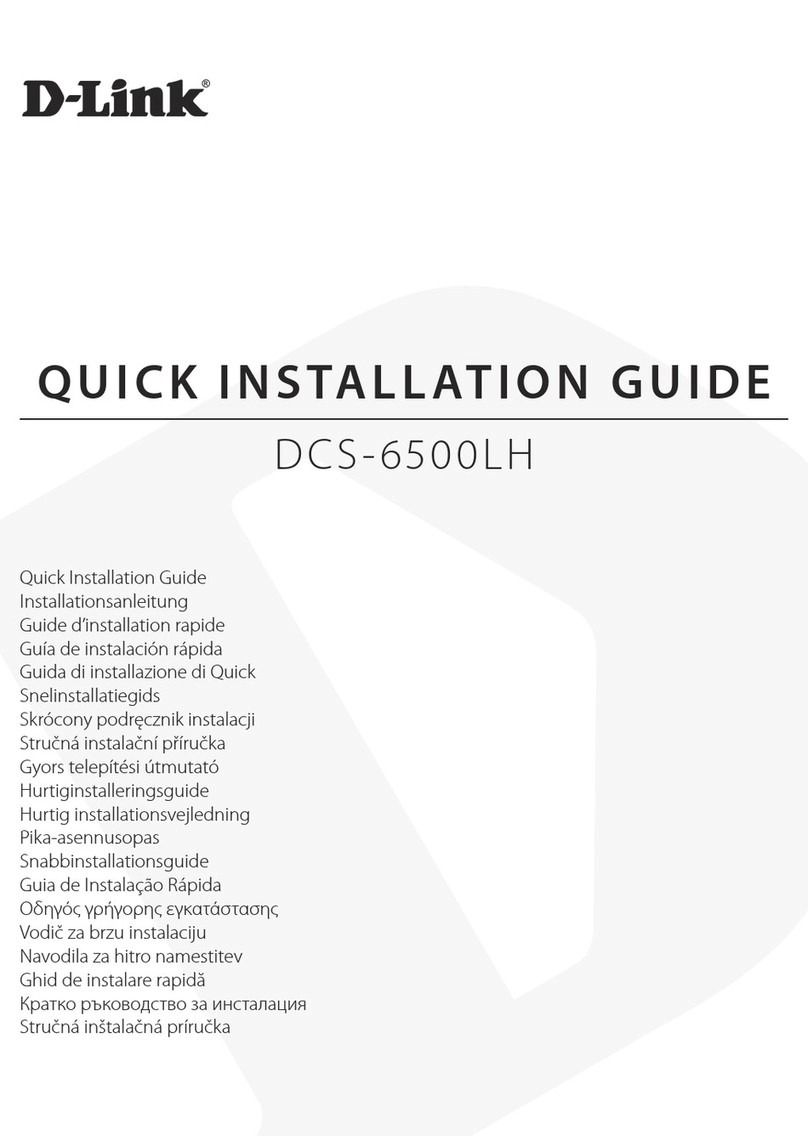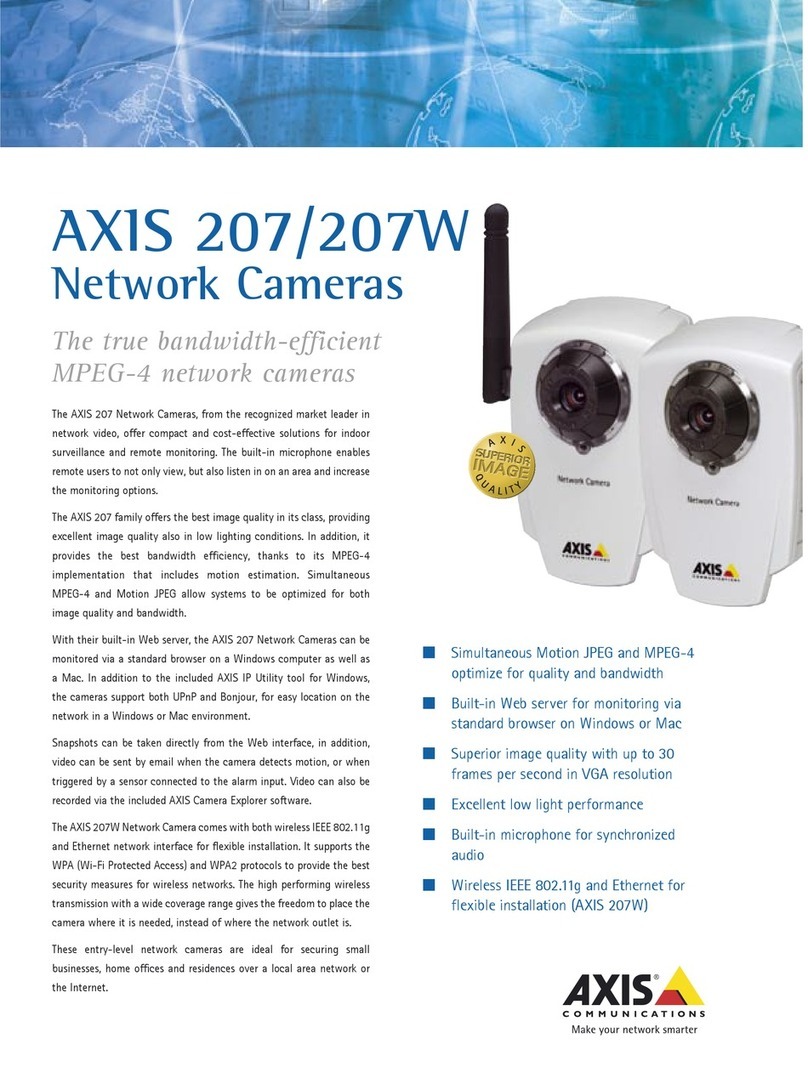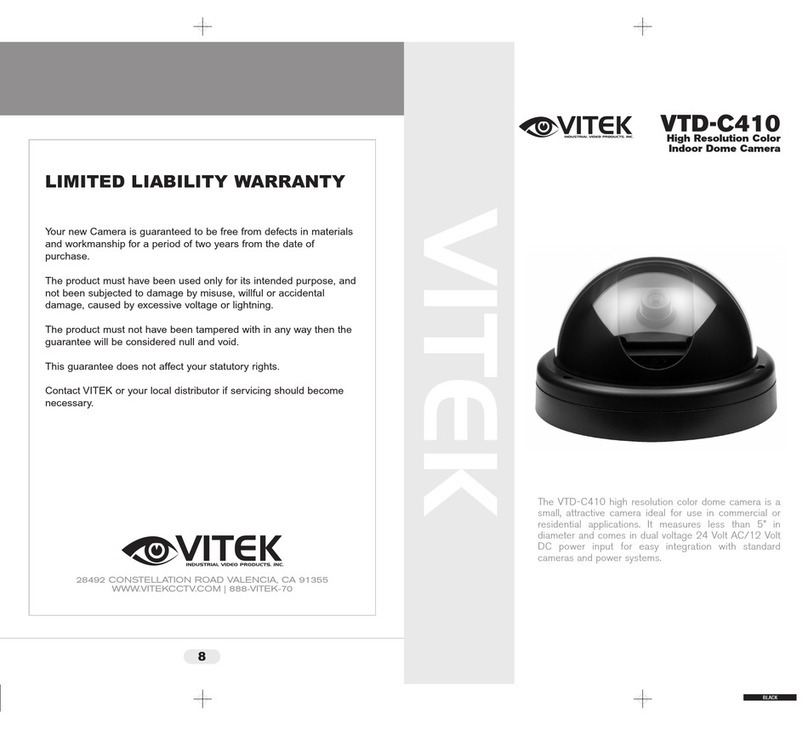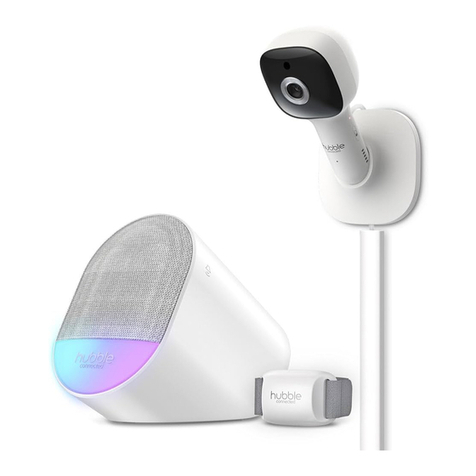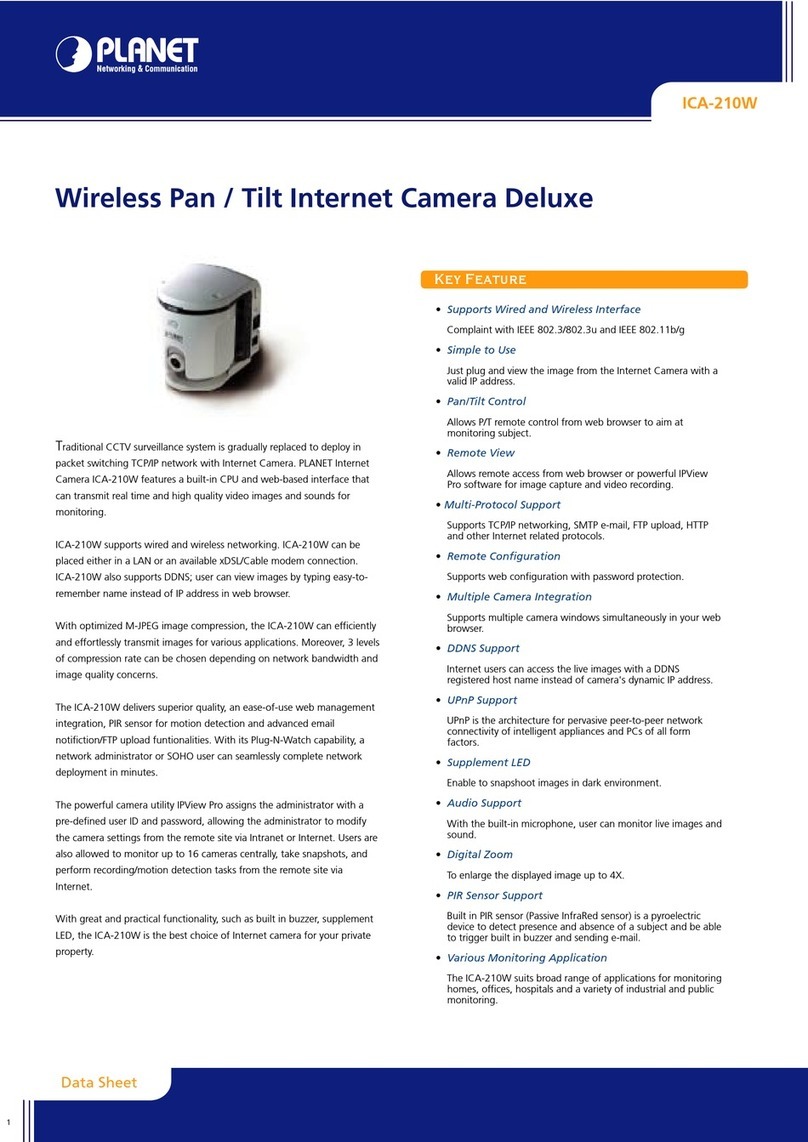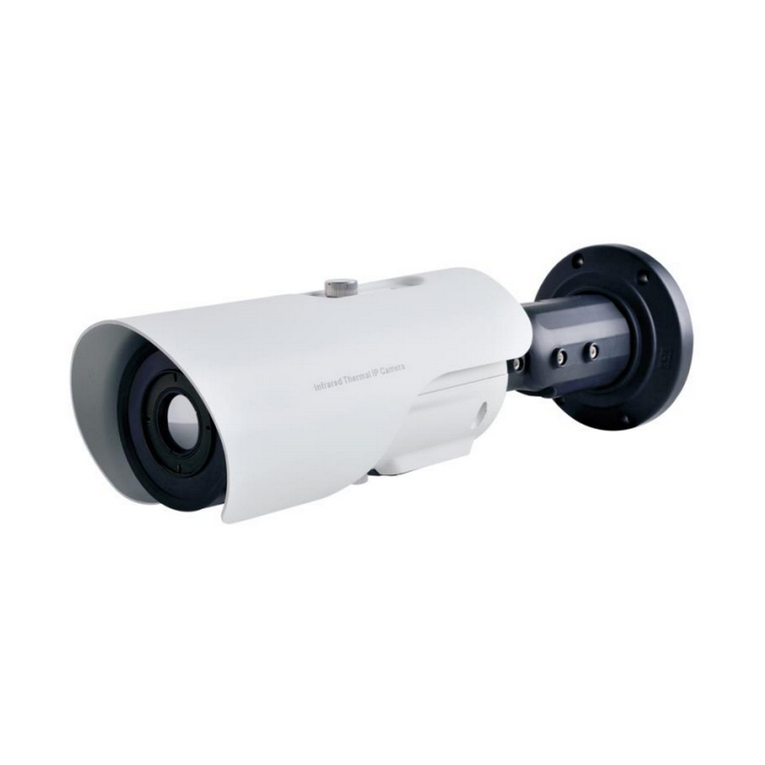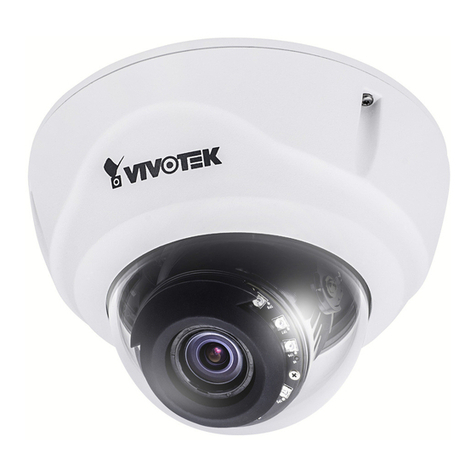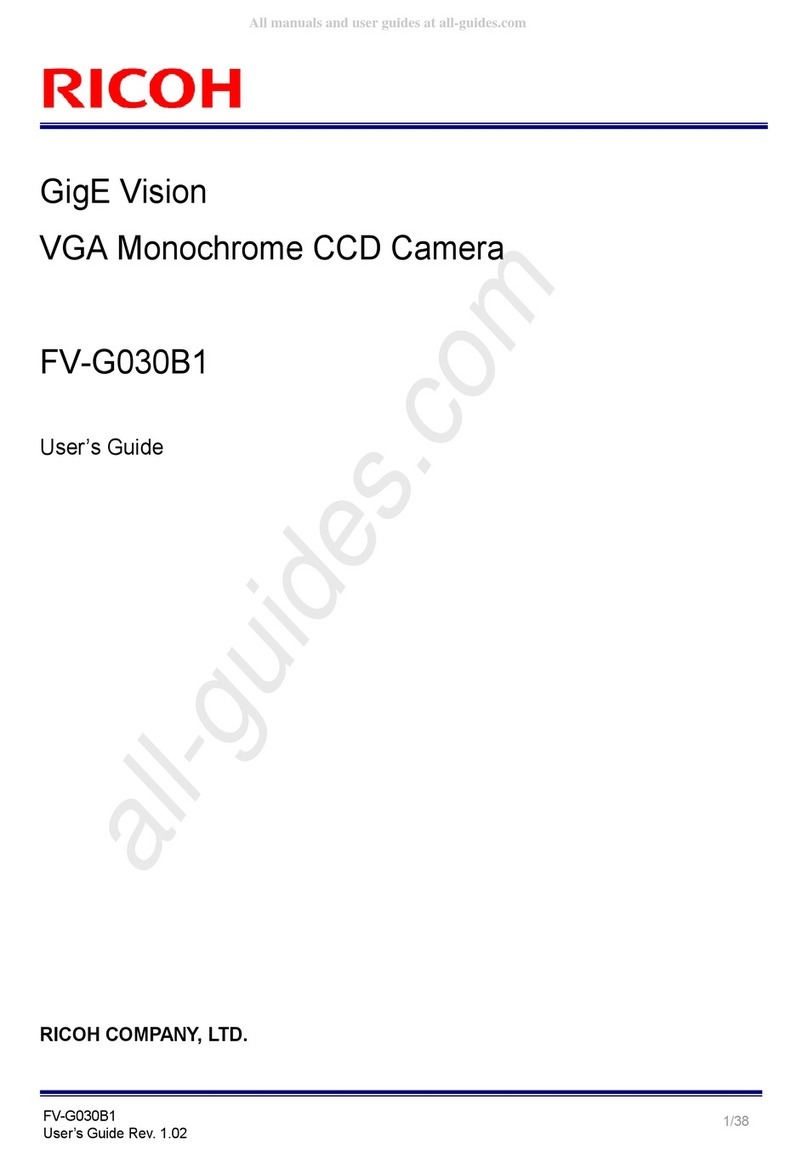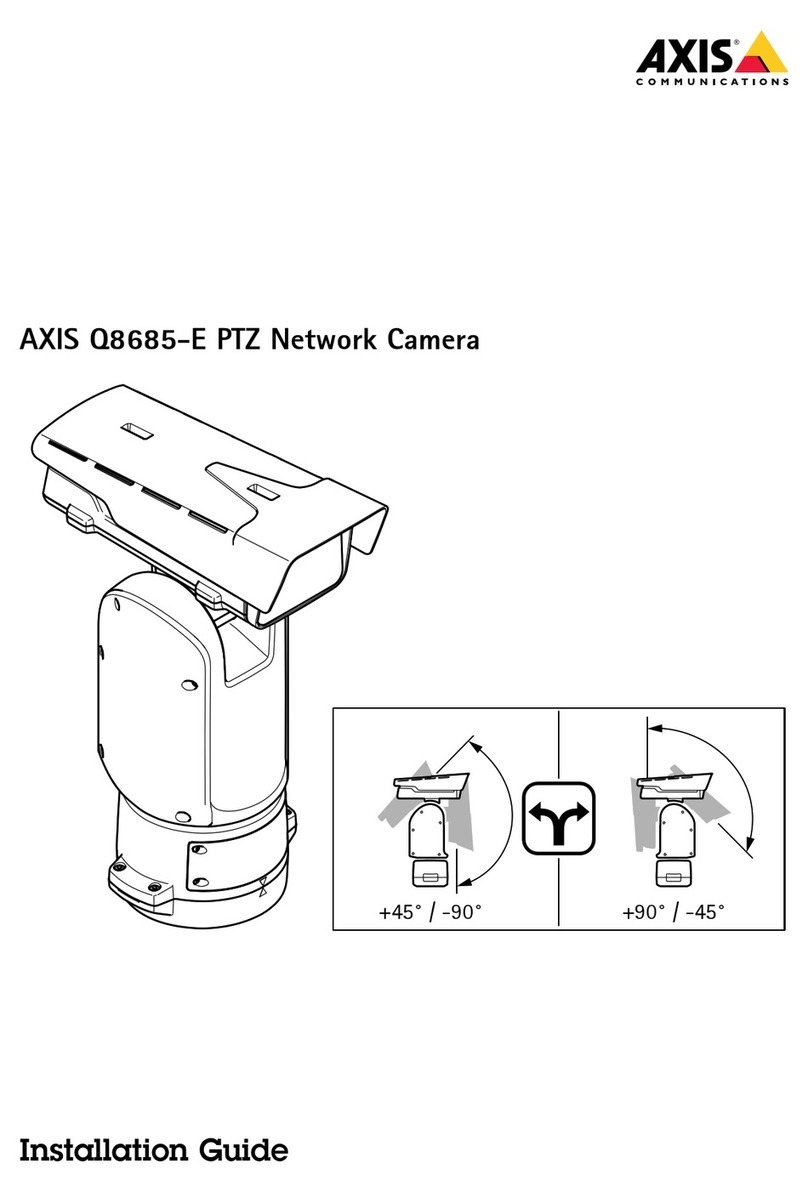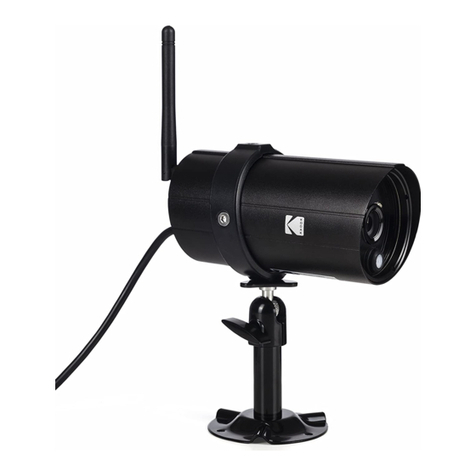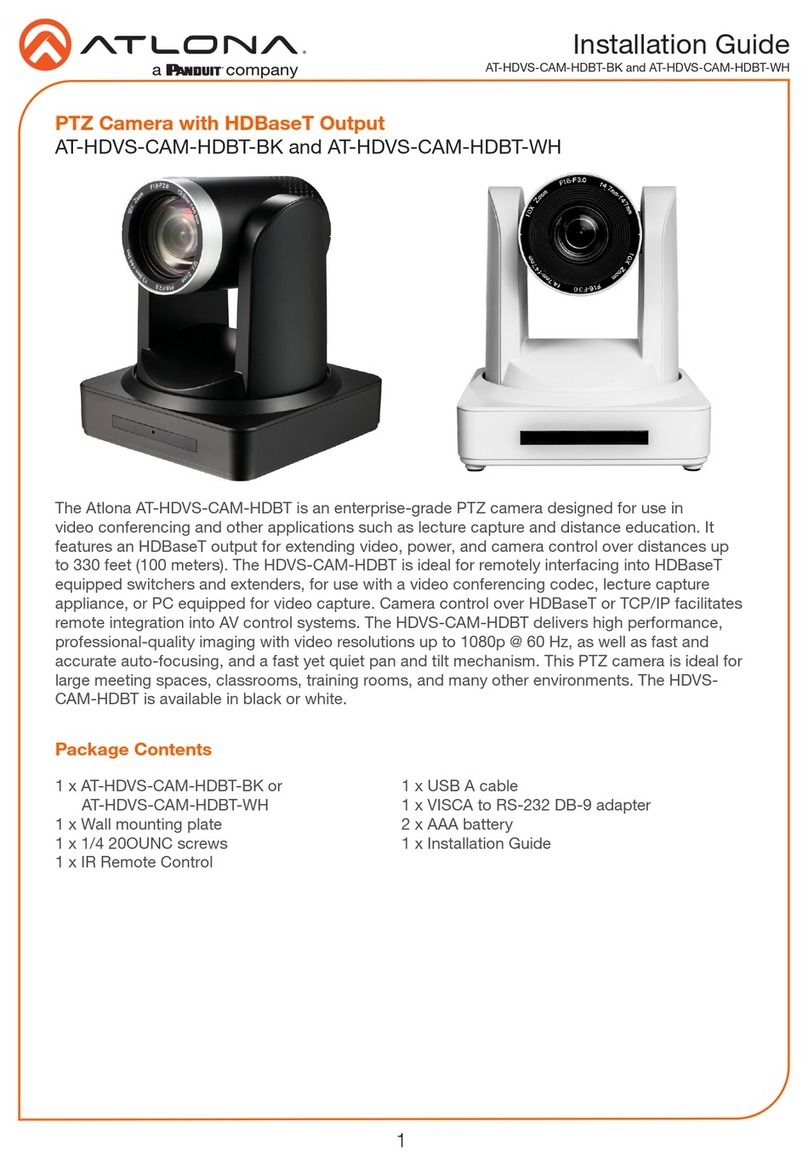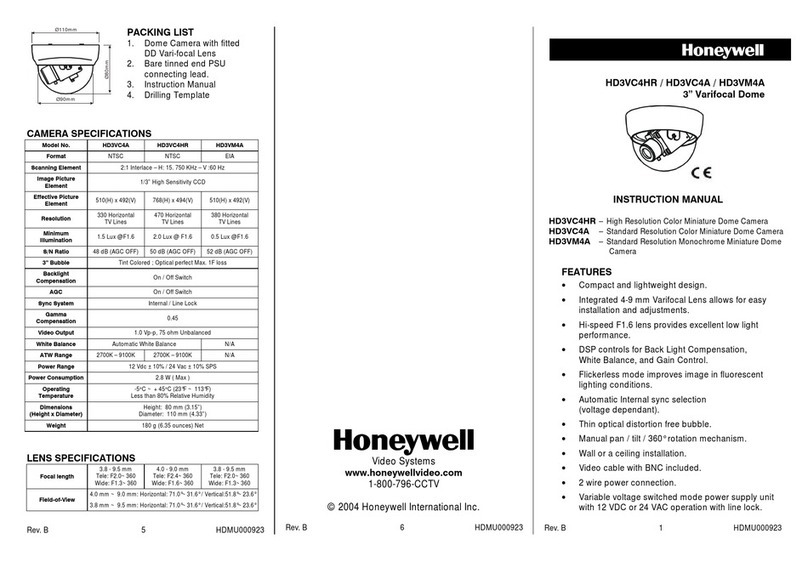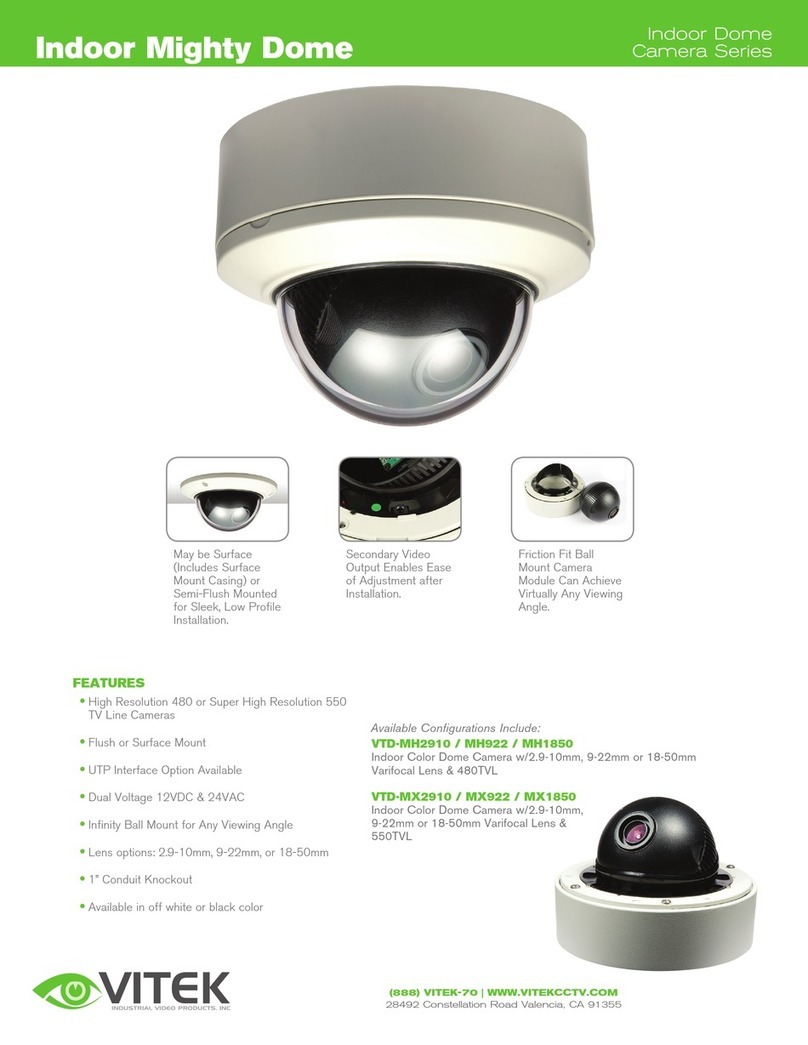Certis IRD67-AD User manual

-1-
IRD67-AD
!
DO NOT OPEN
RISK OF ELECTRIC SHOCK
CAUTION
TO REDUCE THE RISK OF ELECTRIC SHOCK, DO
NOT REMOVE COVER (OR BACK),NO USER
SERVICEABLE PARTS INSIDE.
REFER SERVICING TO QUALIFIED SERVICE
PERSONNEL.
CAUTION
CAUTIONCAUTION !The lightning flash with arrowhead symbol,
within an equilateral triangle, is intended to
alert the user to the presence of uninsulated
dangerous voltage within the product’s
enclosure that may be sufficient magnitude
to constitute a risk of electric shock to a
person.
The exclamation point within an equilateral
triangle is intended to alert the user to the
presence of important operating and
maintenance (servicing) instructions in
literature accompanying the appliance.
CAUTIONCAUTION
PREFACEPREFACE
PRECAUTIONSPRECAUTIONS
1. Do not attempt to disassemble the camera.
To prevent electric shock, do not remove screws or covers.
There are no user-serviceable parts inside. Ask qualified service personnel for servicing.
2. Handle the camera with care.
Do not abuse the camera. Avoid striking, shaking, etc. The camera could be damaged
by improper handling or storage.
3. The installation should be made by qualified service personnel or system installers.
4. Do not use strong or abrasive detergents when cleaning the camera body.
Use a dry cloth to clean the camera when dirty. When the dirt is hard to remove, use a
mild detergent and wipe gently. Then wipe off the remaining detergent with a dry cloth.
5. Clean the CCD faceplate with care.
Do not clean the CCD with strong or abrasive detergents. Use lens tissue or a cotton
tipped applicator and ethanol.
6. Never face the camera towards the sun.
Do not aim the camera at bright objects. Whether the camera is in use or not, never
aim it at the sun or other extremely bright objects. Otherwise, blooming or smears may be caused.
7. Do not operate the camera beyond the specified temperature, humidity or power source ratings.
Use the camera at temperatures within –10 °C to +50 °C (14 °F - 122 °F), and humidity below 90 %.
8. Avoid connections during a lightning storm.
Otherwise, an electric shock may be caused.
1. Do not attempt to disassemble the camera.
2. Handle the camera with care.
3. The installation should be made by qualified service personnel or system installers.
4. Do not use strong or abrasive detergents when cleaning the camera body.
5. Clean the CCD faceplate with care.
6. Never face the camera towards the sun.
7. Do not operate the camera beyond the specified temperature, humidity or power source ratings.
8. Avoid connections during a lightning storm.
FEATURESFEATURES
MODELMODEL
CAMERA CONNECTIONSCAMERA CONNECTIONS
Print V1.1 2K8Q3
INFRARED SURVEILLANCE CAMERA IRD67-AD INFRARED SURVEILLANCE CAMERA IRD67-AD
Before attempting to connect or operate this product,
please read these instructions completely.
IRD67-AD SERIES DAY/NIGHT SURVEILLANCE CAMERA WITH IR-LED
By selecting this product you have chosen to use a professional device, which guarantees the highest
quality and reliability. Certis IRD67-AD series color DSP camera introduces a new level of High-End Function
at Mid-Range and High-End Market with installers friendly, high picture quality with Sony DSP hardware
and Advert proprietary software enhancement.
1/3" SONY SUPER HAD CCD 480TVL
0 Lux at Night with IR LED
4.0 mm IR-Corrected Customized Lens
Virtually No Focus Shift at Day or Night
True Color at Day Light with Certis Customized OLPF
High Quality B/W Picture at Night with TGSE (True
Gray Scale Enhancement) Advert Proprietary
Hardware and Software Technology
Certis Customized Accu-Sense CDS Sensor and
Proprietary Circuit for Perfect Day/Night Switching
High Performance 23 IR LEDS for (0 Lux) up to 50
Ft. Night-Vision
Optimized IR-LED for Evenly Distributed Night-Vision
Certis Proprietary Software Day/Night Technology
Color by Day and 0 LUX B/W by Night with IR
Certis Customized front Glass for Maximized Infra-
red Output While Minimizing Internal Reflection
Optional Fixed High Illumination Mask & Mirror
Selectable
Lowest Power Consumption (70mA @ 12VDC at
Day)
Weather Resistance IP-66 Housing
Lowest Heat on Board for Long Life of Camera
Gold Processed EMC Shell
Noise Free Image at Low Light
12 V DC Power Supply.
Connect the 12 Volt DC power using DC Jack. Please make
sure the polarity is correct. Incorrect polarity may cause
malfunction and/or damage to the camera.
Video Output Connection.
Connect BNC connector with 75 Ohms coaxial cable at Video
Out BNC socket.
Wiring precautions:
Do not cut cable, which may hamper the waterproof ability of the
camera.
Do not bend the coaxial cable into a curve whose radius is 10
times smaller than the cable’s diameter.
Never staple the cable even if with circular staples. Otherwise
impedance mismatching will occur.
12 V DC Power Supply.
Wiring precautions:
INSTALLATION OF CAMERAINSTALLATION OF CAMERA
MOUNTING TEMPLATE STICKER
Fig1.1
MOUNTING TEMPLATE STICKER
Fig1.1 mentioned technical drawing for reference only.
Actual size of Mounting Template Sticker is matched with IRD67-AD camera base
DIMENSIONSDIMENSIONS
Above mentioned technical drawing for reference only.
All dimensions are in millimeters.
Installation Template
for IRD67-AD
Wall Mount
Operating Instructions
Ø94.5 mm
77.0 mm
Polarity Marking
(Center Positive)

-2-
Print V1.1 2K8Q3
IRD67-AD TECHNICAL SPECIFICATIONS IRD67-AD TECHNICAL SPECIFICATIONS
PACKAGE CONTENTS PACKAGE CONTENTS
1. CCD CAMERA..............................................................................................................................1PCS.
2. OPERATING INSTRUCTIONS (MANUAL).......................................................................................1PCS.
3. MOUNTING TEMPLATE STICKER...................................................................................................1PCS.
TECH TIPS: CO-RELATION OF IR CORRECTED LENS WITH FOCUS AT
DAY/NIGH WITH INFRA RED LIGHT
TECH TIPS: CO-RELATION OF IR CORRECTED LENS WITH FOCUS AT
DAY/NIGH WITH INFRA RED LIGHT
Summary to sum up the above, there are two situations where IR corrected lenses should be
preferred:
1.When the illumination changes between visible and infrared light, e.g. from daylight to IR illumination,
from halogen to fluorescent, or from daylight to high pressure sodium or mercury lamps.
2.When using light composed of a mixture of visible light and IR light, such as sunlight, halogen or
ordinary incandescent light bulbs.
The above is valid when using monochrome or day/night cameras only. When using color cameras,
which are not IR sensitive, the advantage of using IR corrected lenses is limited to being color-
corrected as well, resulting in a slight improvement of the picture quality. It is not possible to modify
standard lenses to make them IR corrected, e.g. just by coating the lens elements – at least not with
optimum results. From the early stages of the design phase IR correction must be considered and
included in the design, special glass must be used for the lens elements and special coating of the lens
element surfaces is required. Previously, this caused IR corrected to be fairly expensive, but new
efficient production technologies have reduced costs dramatically.
IRD67-AD
NTSC/PAL
Signal systemSignal system
Scanning systemScanning system
Scanning frequency(H)Scanning frequency(H)
Scanning frequency(V)Scanning frequency(V)
Sync. systemSync. system
Image sensorImage sensor
Total effective pixelsTotal effective pixels
Lens TypeLens Type
MODELMODEL
2:1 Interlace
15734 Hz / 15625 Hz
59.94Hz / 50.00Hz
Sony Super HAD 1/3 inch CCD
Internal
525 lines / 625 lines
380K / 440K
4.0 mm Customized IR-Corrected
S/N RatioS/N Ratio
GammaGamma
Resolution Resolution
Focus ModeFocus Mode
Min. illuminationMin. illumination
Video output levelVideo output level
White BalanceWhite Balance
More than 48 dB ( AGC OFF )
0.45
480 Lines
1.0 Vp-p ( 75 Ohms, composite )
Fixed
0.5 LUX.(F1.2) @ Day / 0 LUX @ Night with IR LED On.
Auto
Exposure (AE/ME)Exposure (AE/ME)
Operating Temp.Operating Temp.
AGCAGC
Current consumptionCurrent consumption
Supplied VoltageSupplied Voltage
Weight Weight
DimensionsDimensions
I / O connectorI / O connector
BLCBLC
Auto
36 dB Variable gain control
1/60 (1/50) ~ 1/100,000 Sec. Auto
DC 7.5 V -12.5 V ( Recommendation DC 12 ± 0.5 V )
70 mA @ 12 VDC Day, 250 mA @ 12 VDC Night with IR LED On.
Molded : Video output : BNC Connector and 12 V DC Input : DC Socket
94.5 mm (Base Diameter)) X 77.0 mm (H)
Approx. 335 g
IP RatingIP Rating
Radiant Distance Radiant Distance
Beam Spread Beam Spread
Peak Wavelength Peak Wavelength Infra Red
LED
Infra Red
LED
Ip55
850 nm
30 Degree
50 Feet
-10°C~ +50°C(14°F ~ 122°F)
(Certis may, at any time and without notice, make changes or improvements to the products and
services offered and/or cease producing or commercializing them.)
The Certis trademark are properties of Security Pte. Ltd. - Singapore.
The coaxial cable is the most common medium for transmission of video signals and
sometimes video and PTZ data together. It is also known as unbalanced transmission, which comes from
the concept of the coaxial cable ( sometimes called “coax” for short ).A cross section of a coax is shown
above. It is a symmetrical and coaxial construction.
The video signal travels through the center core, while the shield is used to common the
ground potential of the end devices - the camera and the monitor, for example It not only commons the
ground potential, but also serves to protect the center core from external and unwanted electromagnetic
interference ( EMI ). The idea behind the coaxial concept is to have all the unwanted EMI induced in the
shield only. When this is properly grounded, it will discharge the induced noise through the grounds at the
camera and monitor ends. Electrically, the coaxial cable closes the circuit between the source and the
receiver, where the coax core is the signal wire, while the shield is the grounding one. That is why it is called
an unbalanced transmission.
COAXIAL CABLE
Protective plastic
Copper shield
Di electric
Center conductor
Cross section of a coaxial cable
TECHNICAL TIPSTECHNICAL TIPS
If you have a choice of crimping connectors, look for the ones that are likely to last longer
in respect to physical use and corrosion, like silver plated or gold plated BNCs. A good practice would
use “Rubber sleeves” (sometimes called “protective sleeves” ) for further protection of the interior of
the BNC from corrosion and to minimize bending stress by plugging and unplugging.
Rubber protector
Crimping
BNC ring
Crimping
center piece BNC shell
Suggestions for correct termination
( dimensions depend on stripping tool )
PROPER BNC TERMINATION
CARE AND FEED YOUR CCTV INSTALLATION CARE AND FEED YOUR CCTV INSTALLATION
Congratulations on the installation of your new Closed Circuit Television (CCTV) Security
System. It has been installed, tested, and is up and running. What now? What steps do you take to get
the best performance and results from your investment? Does it require any maintenance? How will
you know there is a problem before it's too late and important information has been lost forever? Here
are some tips and guidelines to keep your system operating at peak performance:
CCTV IS NOT LIKE YOUR HOME TV SET.
Besides no commercials, this means many things. For one, it is designed for continuous long-term use. The
components are built to completely different standards.
As an example, commercial broadcast video (TV) uses cameras that cost thousands of dollars, and are not
practical for security use. There are a great variety of cameras for the security market, with many different
uses and features. Most are of high quality and will provide good performance. But they are often installed
in locations that can make them susceptible to outside forces; even simple things like cleaning the lenses
occasionally may be necessary, particularly if they are installed outdoors. The monitor operates differently
from your TV too. It does not receive radio broadcasts, but rather gets its signal directly through a cable
(coax or S-Video, not ESPN or HBO). A normal television can be used as a security monitor, but will usually
have to be replaced 2 or 3 times in the life of one security monitor.
BE AWARE THAT CONDITIONS CHANGE.
All the components of your CCTV system are designed to specific international standards, and are
interdependent on each other for proper operation. Things that affect one component may affect the
performance of an entire CCTV system over time. During wet weather, for instance, your system may be
much more prone to ground loops, which can play havoc with the quality of the video. Simple things like
cables and connectors can deteriorate as they get older. Cables and connectors are often overlooked, and
yet as their age, are capable of causing problems for the entire system. If in doubt, call the installing
company for an inspection.
CCTV IS NOT LIKE YOUR HOME TV SET.
BE AWARE THAT CONDITIONS CHANGE.
Operating Instructions
Other Certis Security Camera manuals
